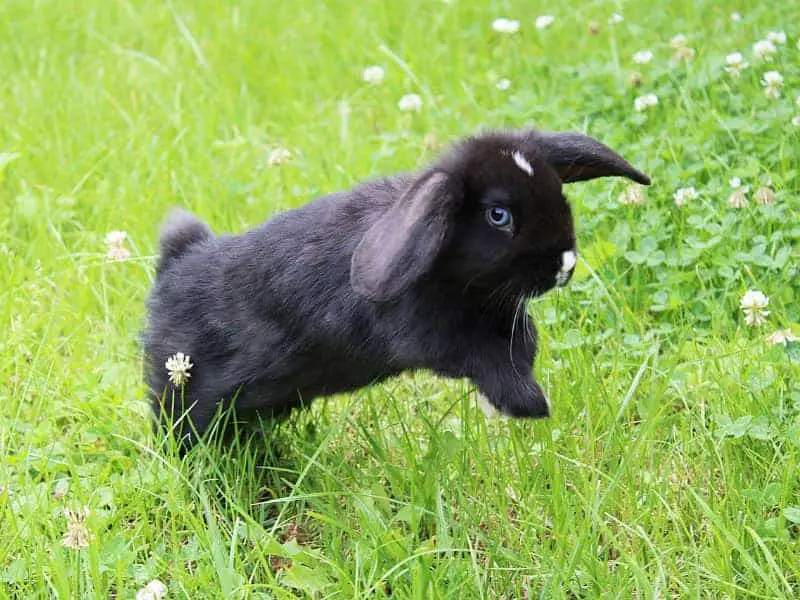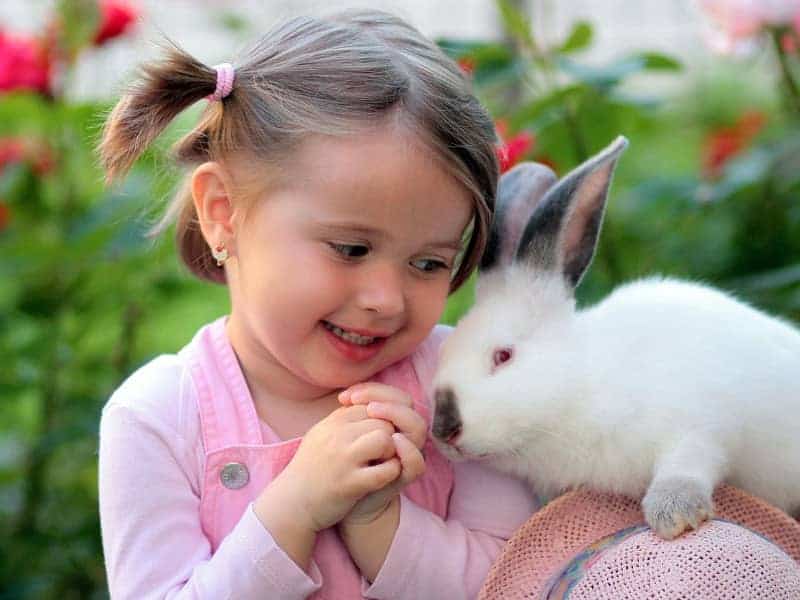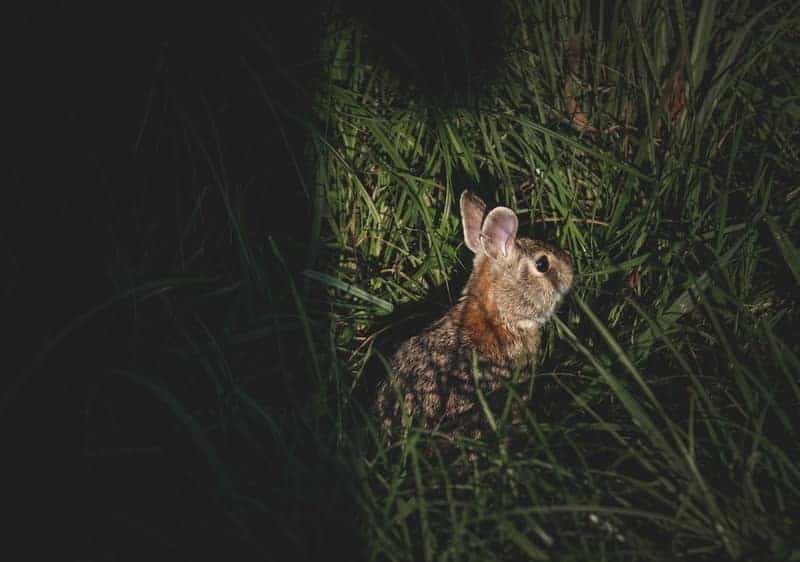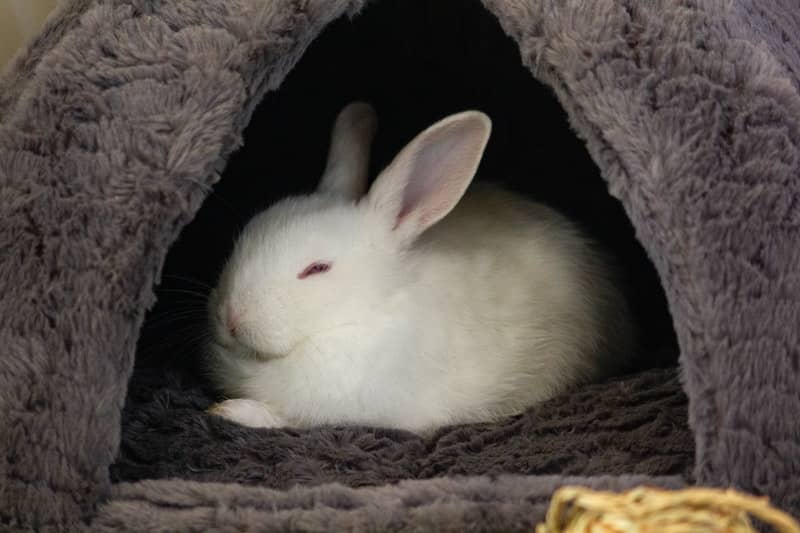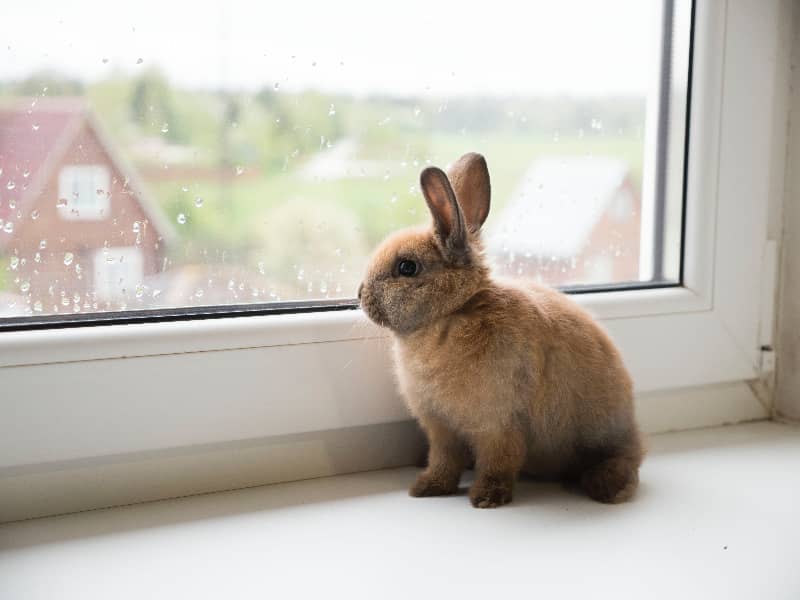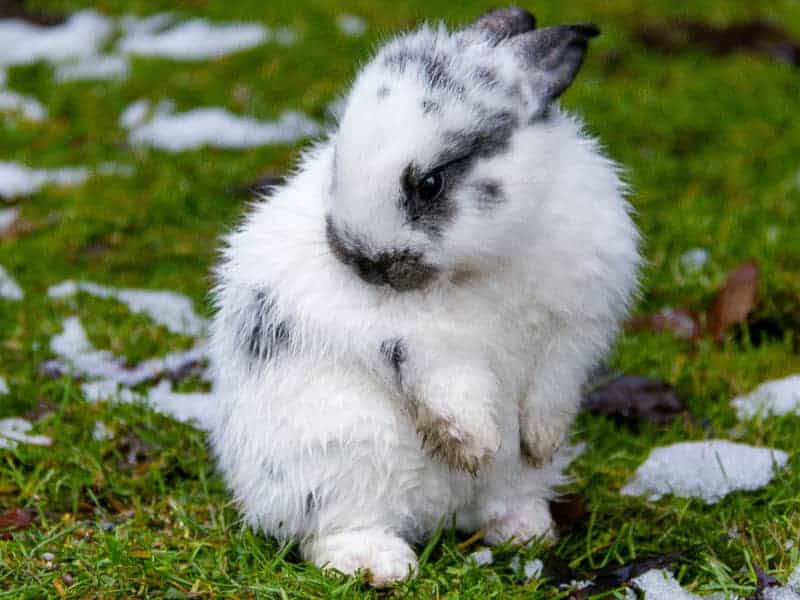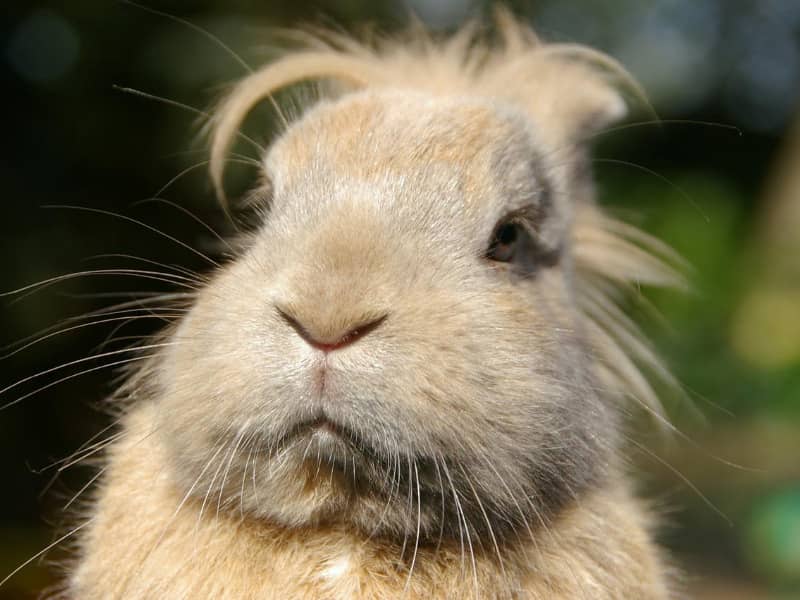
Tooth malposition rabbit
Tooth misalignment in rabbits is a common reason why the animals become ill. It is one of the most common reasons why a visit to the vet is necessary. One of the reasons why these misalignments occur so often is the wrong diet for rabbits. What you have to pay attention to everything and where the malocclusion rabbit comes from, you will learn from us.
The incisors of the rabbit
A rabbit has two pairs of incisors in the upper jaw, these are arranged one behind the other. When the teeth are in a healthy position, only two of them are visible, because the front ones are much larger and cover the back teeth. The front teeth are wide and therefore cover the small and roundish rear peg teeth. If the jaw of the Rabbit closed and the teeth healthy, then the lower incisors position themselves between the front incisors in the upper jaw and the post teeth.
Rabbits have rootless teeth and incisors grow throughout life. Every week about 0.2-0.4 mm. The older a rabbit is, the faster the teeth grow.
Why malocclusion of teeth in rabbits?
There are different reasons for this, but also some assumptions, for example that the round head shape and the small skull are responsible for these tooth misalignments. We do not want to exclude this, because a malpositioned teeth can also be genetically predisposed and not infrequently it is inherited from the parents.
Responsible breeders therefore remove rabbits from the breeding line that already have malocclusion at a young age. This is to avoid that the malocclusion is passed on to the next generations. Another reason that malocclusions occur is infections. These infections occur when the rabbit gnaws on things that it cannot refer. This can be especially bars of the cage.
However, the greatest influence on the position and health of the teeth has the diet of the rabbit.
Tooth malocclusion rabbit, what the diet has to do with it
A large proportion of rabbit owners believe the advertisements of feed manufacturers and feed their rabbits with dry food. This dry food is not unhealthy if it is used as a supplementary feed. However, if it is used exclusively as feed, then this can have fatal consequences. The reason for this is that with dry food the rabbit absorbs its food much faster and thereby the teeth do not have to work sufficiently.
This means that the rabbit's teeth are not worn down as much as they grow back. A numerical example for this: A pellet, i.e. dry food is chewed for approx.1 to 2 minutes, then it is crushed softened and can be swallowed by the rabbit. For 1 g of hay, on the other hand, the rabbit needs between 5 and 10 minutes for the hay to be crushed and salivated so that it can be swallowed.
Due to the rapid feeling of satiety with dry food, which then also swells in the stomach, the teeth are no longer sufficiently loaded. Due to the non-existent load, the chewing muscles develop back and also the strength of the teeth in the jaw decreases. Due to the reduced strength of the teeth in the jaw, the probability of a malocclusion is significantly higher.
Likewise, bread is not suitable as rabbit food, the misconception is that the hard bread will wear down the teeth. However, this is not the case, why, you will learn in the next section.
How to chew your rabbit
If you watch your rabbit eat, you will see that it does not make up and down movements while chewing. The rabbit chews horizontally, the rabbit's jaws move back and forth and in the process the rabbit's food is cut. This chewing motion is called horizontal chewing and is typical of the rabbit.
As soon as a rabbit has to eat something harder (dry food, bread, carrots), then the rabbit has to start a vertical chewing movement. This vertical chewing movement is perfectly normal for humans and all carnivores. However, it is not for a rabbit because rabbit teeth are flexible. This unnatural chewing motion forces the teeth into the jaw and can result in tooth root inflammation.
Diseases caused by dental problems
Besides an obvious malposition of the teeth, which can be recognized visually, other diseases can also be caused by dental problems. A large part of the diseases in the head area in rabbits, are due to dental diseases. For example, watery eyes are often not a sign of inflamed tooth roots. Misaligned teeth in rabbits can also cause injuries to the inside of the mouth and the corners of the mouth.
In extreme malpositions, the palate and even the nose can be injured. Also, an abscess inside the mouth and at the corners of the mouth is not uncommon. Not infrequently, the animals die of starvation, because they can no longer chew properly, or the severe inflammation, which spreads to the whole body, leads to an agonizing death.
Therefore, your veterinarian should regularly examine your rabbit's teeth and correct any misalignment. But you are also obliged to observe your rabbit. If your rabbit changes its eating behavior or chews very slowly and salivates a lot, you should consult a veterinarian as soon as possible.
Tooth malposition rabbit - treatment options
Your veterinarian should always examine your rabbit's incisors during an examination. For this purpose, it is almost always sufficient to pull up the rabbit's lips a little to see if there is a misalignment of the teeth. An experienced veterinarian will also see evidence of other dental and jaw conditions during this examination. If there is further suspicion, then an x-ray is usually essential.
Incisors that are misaligned can largely be treated by regular shortening. This shortening should take place with the help of a diamond cutting disc, because this method is the gentlest for the rabbit incisors. Never shorten a rabbit's incisors with pliers or similar tools, as consequential damage can occur.
Consequential damages are jaw abscesses caused by broken or splintered teeth. In the worst case, the tooth in the jaw breaks off and a costly operation is necessary. Sharp edges can also occur, with which the rabbit can injure itself inside the mouth. But also the regular grinding of the teeth is a burden for your rabbit.
Therefore, in some animals it may be advisable to remove the incisors completely. Especially if regular grinding and proper feeding do not improve the condition.
Prevent a malocclusion of the teeth in the rabbit
Feeding fresh grass and herbs, as well as hay when fresh food is not available, is the best possible prophylaxis to prevent misaligned teeth in rabbits. This is because when the rabbit eats, the teeth rub against each other and thus wear down. No particularly hard food is necessary, but the occupation with the long and persistent chewing provides for the abrasion.
Hands off nibble sticks and nail wood from the "pet shop". These are usually made of hardwood and mixed with a sugar solution. This is to ensure that the rabbits eat the sweet part and the remaining piece of wood remains lying. It makes more sense to offer fresh twigs, these are nibbled with pleasure and support the natural tooth abrasion perfectly.
If you feed your rabbit this way, tooth misalignment should usually not be an issue. Should a malocclusion still occur, then you will not be able to avoid a visit to the vet. However, by providing the best possible food, it is possible to delay the intervals of vet visits as long as possible. A rabbit tooth misalignment is not a leg break, but must always be closely monitored.
Author

-
Garden animal - A life with nature
Welcome to my animal blog! My name is Dirk and I am happy to take you on my journey through the fascinating world of animals and gardening.
Born 54 years ago, I have had an insatiable curiosity for the animal world around me since childhood. Although I have moved professionally in other industries, my true passion has always been animals and nature. It is remarkable how a small garden has become such an important part of my life.
Many of my fondest memories are associated with the animals that share our home. Whether it's the curious squirrels that scurry across the trees in the morning, the colorful variety of birds that visit our feeders, or the busy bees and butterflies that pollinate our flowers, every moment with them is invaluable to me.
This blog is my contribution to share my experiences, discoveries and insights with like-minded people. Here I will share stories of unforgettable encounters with animals, give tips on gardening and creating wildlife-friendly habitats, and take you on my journeys through nature.
Thank you so much for being here!
Cordial,
Dirk aka garden animal
Last posts
- 27. February 2024PetsVeganes Hundefutter – Grün und Gesund?
- 18. January 2024ChickensOregano für Hühner
- November 27, 2023HamsterDiurnal hamsters
- November 24, 2023HamsterHamster hammock

